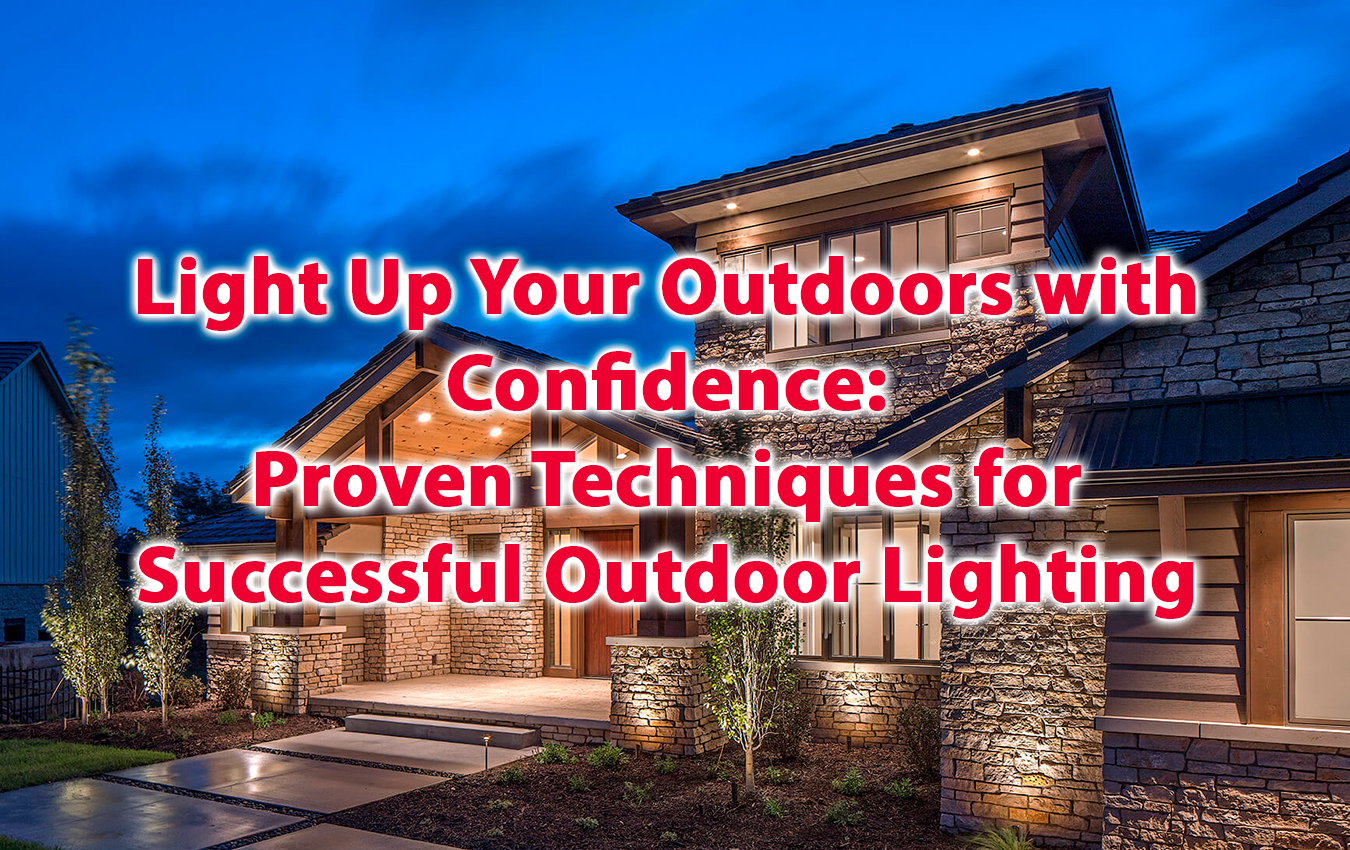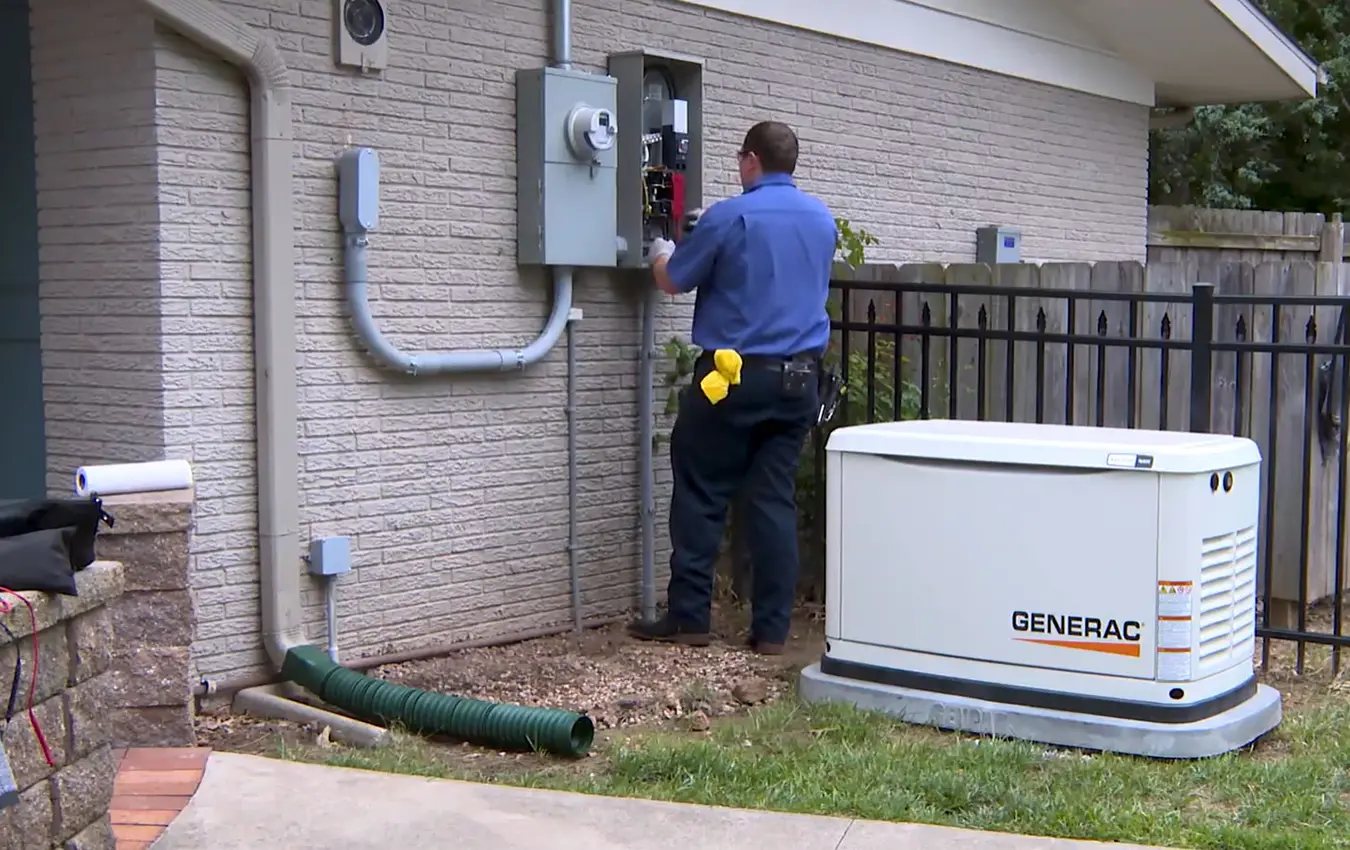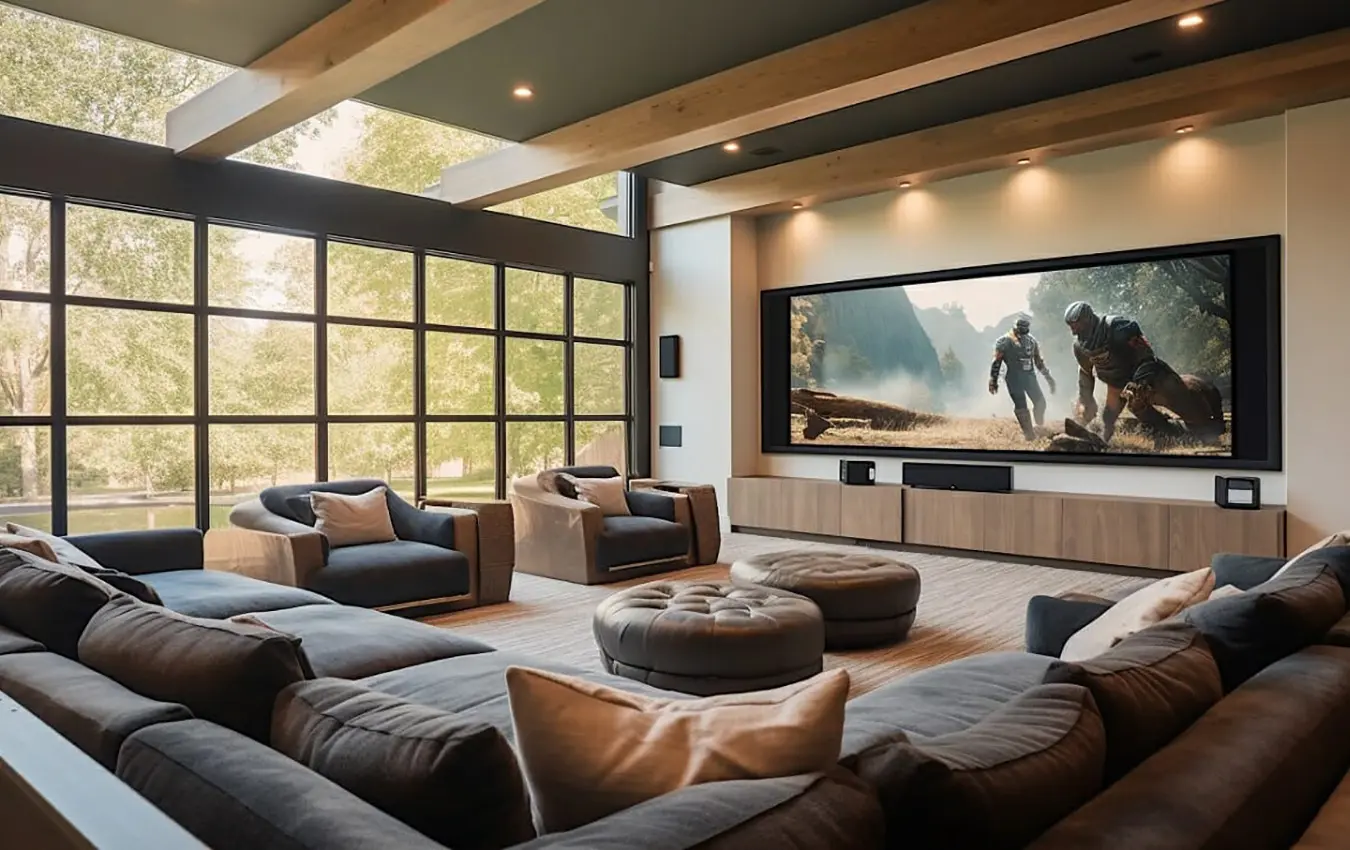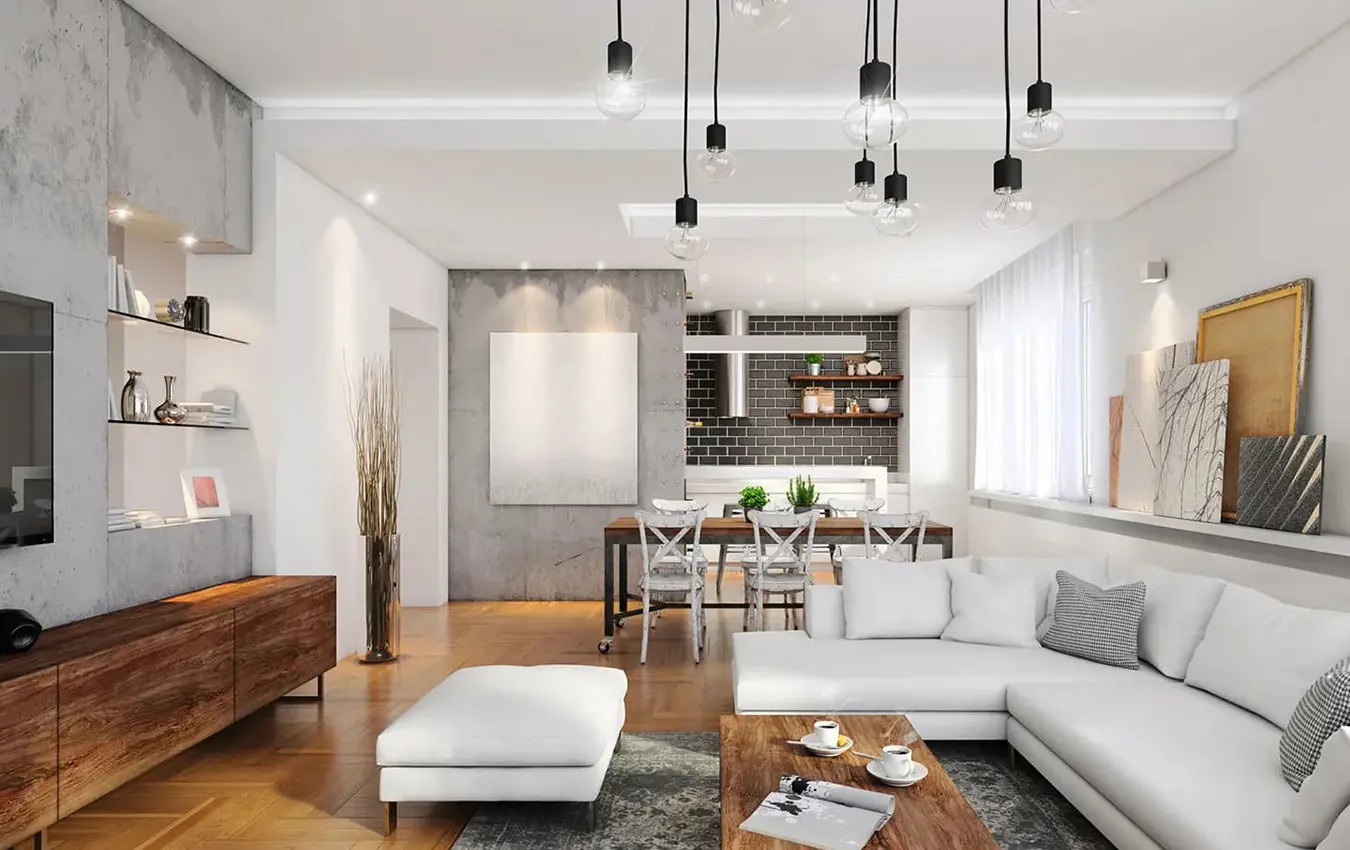Outdoor lighting plays a crucial role in enhancing the beauty and functionality of our outdoor spaces. It’s not just about brightening up the dark corners, but also creating a warm and welcoming atmosphere that extends from the comfort of our homes to the outdoors.
One of the key benefits of outdoor lighting is safety and security. Well-lit exteriors can deter potential intruders and reduce the risk of accidents, such as tripping over unseen obstacles. Whether it’s lighting up the pathway to your front door or highlighting the architectural features of your home, proper outdoor lighting can significantly improve the security of your property while adding aesthetic appeal.
In this article, we’ll discuss how you can maximize the benefits of outdoor lighting, from choosing cost-effective and sustainable options to maintaining them for optimal performance. Let’s light the way to a safer, more beautiful outdoor space!
Understanding the Basics of Outdoor Lighting
Outdoor lighting can dramatically enhance the beauty of your home, create a safe environment, and extend your living space. Here is a simple guide to help you understand the essentials of outdoor lighting.
Different Types of Outdoor Lighting Fixtures Available
There are many types of outdoor lighting fixtures. Each one serves a different purpose and creates a unique effect:
- Path lights – These are small posts with a light built-in, typically used to illuminate walkways or garden paths.
- Wall lights – These are mounted on walls, often used for enhancing architectural details and providing general illumination in outdoor spaces.
- Spotlights – These provide intense, focused light, ideal for highlighting specific features like statues or trees.
- Deck lights – These are small lights that can be installed in or on decking, steps, or other outdoor structures to provide gentle lighting.
- Floodlights – These emit a broad beam of light, making them perfect for illuminating large areas like driveways or backyards.
Choosing the Appropriate Lighting for Different Outdoor Areas
Choosing the right lighting for your outdoor areas depends on the purpose and desired ambiance. Here are some common lighting options for different areas of your home:
- Entrances and Exits – Wall lights or overhead lights are ideal to ensure safety and visibility.
- Paths and Driveways – Path lights or bollard lights can create an inviting and secure pathway.
- Garden Features – Spotlights or floodlights can highlight beautiful plants or sculptures.
- Decks and Patios – Deck lights or string lights can create a cozy, intimate atmosphere for gatherings.
The choice of lighting should complement your home’s style. For a modern look, consider sleek, minimalistic fixtures, while for a rustic feel, lantern-style lights would be more suitable.
Create an atmosphere of comfort and safety outside your home! And Premier Electrical Services can help you properly install exterior lighting and sensors. Please, reach us by phone at 954-900-1696 today!
Understanding the Importance of Proper Placement and Positioning
Proper placement and positioning of outdoor lights are critical for achieving the desired effect and avoiding light pollution. Here are some tips:
- Avoid Glare – Position lights so they don’t shine directly into people’s eyes or windows.
- Highlight Features – Place spotlights at the base of the feature you want to highlight and angle them upwards.
- Ensure Safety – Illuminate all paths, steps, and changes in terrain to prevent accidents.
Creating the Perfect Ambiance with Outdoor Lighting
Making a warm and inviting outdoor atmosphere goes beyond merely illuminating your space. With thoughtful planning and design, your outdoor lighting can truly transform your exterior environment.
Techniques to Create a Warm and Inviting Atmosphere
The secret is to use soft, warm-toned lights. Opt for LED bulbs that emit a warm white or yellow color temperature. This creates a cozy, relaxing environment reminiscent of a beautiful sunset or the glow of a campfire. Also, consider using dimmable lights or smart bulbs that allow you to adjust the brightness to suit different moods and occasions.
Utilizing Different Lighting Levels and Layers for Depth and Texture
Layering light at different levels adds depth and texture to your outdoor space. Here are three key layers to consider:
- Ambient Lighting – This is your main source of light, often coming from overhead fixtures or post lights.
- Task Lighting – This is focused light for specific tasks like grilling or reading. Think of deck lights or path lights.
- Accent Lighting – This is used to highlight features, such as landscaping or architectural details. Spotlights or floodlights work well here.
To create texture, consider using shadow and silhouette effects. Place a light source behind an object to cast intriguing shadows or silhouettes on a wall or other surfaces.
Incorporating Color and Decorative Elements
Color and decorative elements can add a festive touch to your outdoor space. Colored bulbs can be used for special occasions or to match seasonal decor. For instance, use orange lights for Halloween or multicolored lights for the holiday season.
Decorative fixtures are another way to add personality to your space. Lanterns, fairy lights, or even solar-powered garden lights in various shapes can add an element of whimsy and charm.
Highlighting Key Features with Outdoor Lighting
Outdoor lighting can do more than just illuminate your outdoor space; it can also highlight and accentuate key features. Let’s discuss how you can use lighting to showcase architectural details, landscaping, focal points, and ensure safe navigation around your property.
Showcasing Architectural Details and Landscaping
To highlight architectural details of your home, such as arches, columns, or textured walls, consider using wall lights or spotlights. Place these fixtures close to the surface and angle them upwards for a dramatic effect known as wall grazing.
For landscaping, use a mixture of lighting techniques. Spotlights can highlight a beautiful tree or plant, while well lights can be used to uplight smaller plants or shrubs. Silhouetting, achieved by placing a light behind an object and aiming it towards a wall, can create a stunning backdrop for dense plants or interestingly shaped objects.
Techniques to Accentuate Focal Points and Outdoor Art
Creating a focal point with lighting draws attention and adds visual interest. If you have a statue, water feature, or other piece of outdoor art, use spotlights or floodlights to highlight these elements. Position the light source at the object’s base and aim it upward. This technique, known as uplighting, creates dramatic shadows and adds depth and dimension to the object.
Illuminating Pathways and Walkways for Safety and Aesthetics
Pathway lighting serves two purposes: safety and aesthetics. For safety, ensure that the lights are bright enough to clearly show the path’s outline and any changes in elevation. For aesthetics, choose fixtures that match your overall design theme and space them evenly along the path for a visually pleasing effect.
Maximizing Security and Safety with Outdoor Lighting
Outdoor lighting can be a powerful tool in enhancing your home’s security and safety. From motion sensor lights to smart technology, here’s how to make the most of your outdoor lighting for a safer home environment.
Implementing Motion Sensor Lights for Detection and Deterrence
Motion sensor lights are an excellent way to improve security. These lights turn on when they detect movement, illuminating areas and potentially deterring unwanted visitors. Position motion sensor lights around entrances, walkways, and any areas that are hidden from view. The sudden illumination alerts you of activity and startles potential intruders.
Using Strategic Lighting to Eliminate Dark Spots and Shadows
Well-placed lighting can eliminate dark spots and shadows where intruders might hide. Floodlights are particularly useful for this purpose as they emit a wide, bright beam of light. Install these at high points, such as rooflines or tall posts, to cover large areas of your property. Use wall or landscape lights for smaller spaces to ensure all areas are well lit.
Integrating Smart Lighting Technology for Remote Control and Scheduling
Smart lighting technology takes your outdoor security to another level. With smart lights, you can control your outdoor lighting remotely using a smartphone app. This means you can turn lights on or off, adjust brightness, or even change colors from anywhere, giving the impression that someone is home even when you’re away.
Additionally, most smart lights allow you to set schedules. You can program your lights to turn on at dusk and off at dawn, or at specific times that suit your routine. This provides consistent lighting, which is key for effective security.
Energy-Efficient Solutions for Outdoor Lighting
Outdoor lighting is not just about aesthetics and security; it’s also about efficiency and sustainability. To make outdoor lighting more cost-effective and environmentally friendly is easy.
Choosing LED Lighting for Cost Savings and Environmental Benefits
LED lights are a great choice for outdoor lighting. They use less energy than traditional incandescent bulbs, which means lower electricity bills. Plus, they last much longer, reducing the need for frequent replacements. Environmentally, LED lights are a better choice as they don’t contain harmful substances like mercury, and their energy efficiency means less CO2 emissions.
Utilizing Solar-Powered Lights for Sustainable Outdoor Illumination
Solar-powered lights are another excellent way to create sustainable outdoor illumination. These lights harness the sun’s power during the day and store it in batteries for use at night. They’re perfect for areas that receive plenty of sunlight and are especially useful for places where wiring may be a challenge. From pathway lights to security lights, there’s a wide range of solar-powered fixtures available to suit your needs.
Practical Tips for Reducing Energy Consumption Without Compromising the Aesthetic
Reducing energy consumption doesn’t mean you have to compromise on style or functionality. Here are some practical tips:
- Use Dimmers: Dimmers allow you to adjust the brightness of your lights, using only as much energy as needed.
- Install Motion Sensors: Rather than leaving lights on all night, motion sensors ensure lights are only on when necessary.
- Choose Energy-Efficient Bulbs: Opt for LED or solar-powered lights for their energy efficiency.
- Use Timers: Set your lights to turn on and off at specific times to avoid unnecessary usage.
Maintenance and Care Tips for Outdoor Lighting
Keeping your outdoor lighting in top shape is critical to longevity and performance. Here are some maintenance and care tips to help you get the most out of your outdoor lights.
Regular Cleaning and Inspection for Optimal Performance
Dirt, dust, and grime can accumulate on your light fixtures over time, reducing their brightness and effectiveness. Regular cleaning is essential to keep your lights shining brightly. Use a soft cloth to wipe away any dirt or dust from the fixture and bulb. If necessary, use a gentle cleaner suitable for the material of your lights.
Check for any signs of wear and tear, such as frayed wires or damaged fixtures. Replace any burnt-out bulbs promptly to ensure consistent lighting.
Troubleshooting Common Problems and Issues
Sometimes, outdoor lights may not work as expected. Here are some common issues and how to troubleshoot them:
- Light Won’t Turn On: Check if the bulb is burnt out and needs replacement. If the bulb is fine, check the wiring and connections.
- Light is Dim: This could be due to a dirty or dusty fixture. Clean the fixture and bulb to see if that solves the problem.
- Motion Sensor Light Not Working: Ensure the sensor isn’t obstructed. Also, check the settings, as it may be set not to trigger during certain times of the day.
Seasonal Adjustments and Maintenance for Different Weather Conditions
Outdoor lights are exposed to various weather conditions, and different seasons may require different maintenance approaches.
In winter, snow and ice can cover your fixtures, reducing their effectiveness. Make sure to gently remove any snow or ice buildup.
During fall, leaves and debris might accumulate on or around your lights. Regular cleaning is necessary to keep them clear.
In summer and spring, check for any insect nests or bird droppings that might affect your lights’ performance.
Conclusion
As we’ve explored in this article, outdoor lighting is a multifaceted tool that can enhance your outdoor spaces’ security, aesthetics, and efficiency. Many options are available, from implementing motion sensor lights for improved safety to adopting environmentally friendly options like LED and solar-powered lights.
Regular maintenance and seasonal adjustments are critical to the longevity and optimal performance of your outdoor lighting. And with a bit of troubleshooting knowledge, you can ensure your lights always function as they should.
Feel free to experiment with different lighting techniques and technologies. Your outdoor space is an extension of your home, and with the right lighting, it can become your favorite ‘room’ in the house. Need help with lightning installation? Then call Premier Electrical Services at 954-900-1696.
Check out the latest news:
- 10 Electrical Hazards of DIY Generator Installation
- Transform Your Living Space: The Benefits of Home Theater Systems
- How to Choose the Right Lighting Fixtures for Your Home or Business
- Don’t Be Left in the Dark: Why Homeowners Should Consider Premier Electrical Services for Backup Generator Installation
- Residential Electrical Wiring: Why You Need a Professional Electrician






